What are those red columns in St. Petersburg? (PHOTOS)

If you ever turned out on the Neva River banks in central St. Petersburg, you would certainly notice those big red columns. They are situated on the Vasilievsky Island spit and form its architectural ensemble.
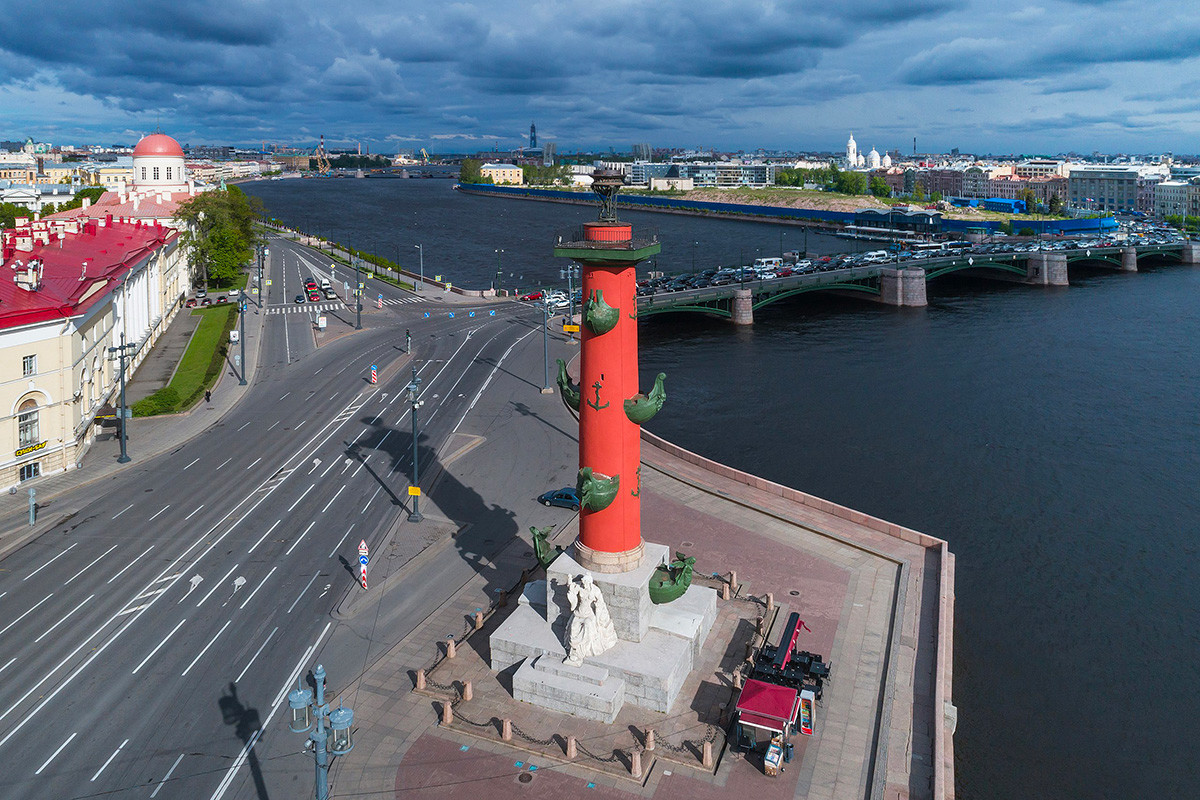
The Vasilievsky Island Spit in St. Petersburg
A.Savin, WikiCommonsNow, these columns are one of the most popular postcard views, alongside lifted bridges or the Winter Palace. However, a rare onlooker would ask what they stand for? Are they just a decoration or do they have any function? We investigated.
A little historical background
The Russian Emperor Peter the Great, who founded the city in 1703, didn’t get to see these columns; they appeared later, in the early 19th century. But what he did do, is create the first ever Russian navy and committed with it some first great naval victories (read more here).
The glory of the Russian navy meant the strength of the Russian Empire and brought fear to all the countries that had invasions in plans.
Victory columns
The red columns in St. Petersburg are called rostral columns. Since ancient times, and particularly Ancient Rome, architects used to “decorate” columns with trophies - the prows or rams of the defeated ships, which, in Latin, are called ‘rostrum’.
The more rostrums, the more enemies should be frightened to attack the navy. And more people would be proud of their country.
Another famous example of the rostral column is the Columbus Monument at Columbus Circle in New York City. There are also rostral columns in French Bordeaux, on the place des Quinconces.
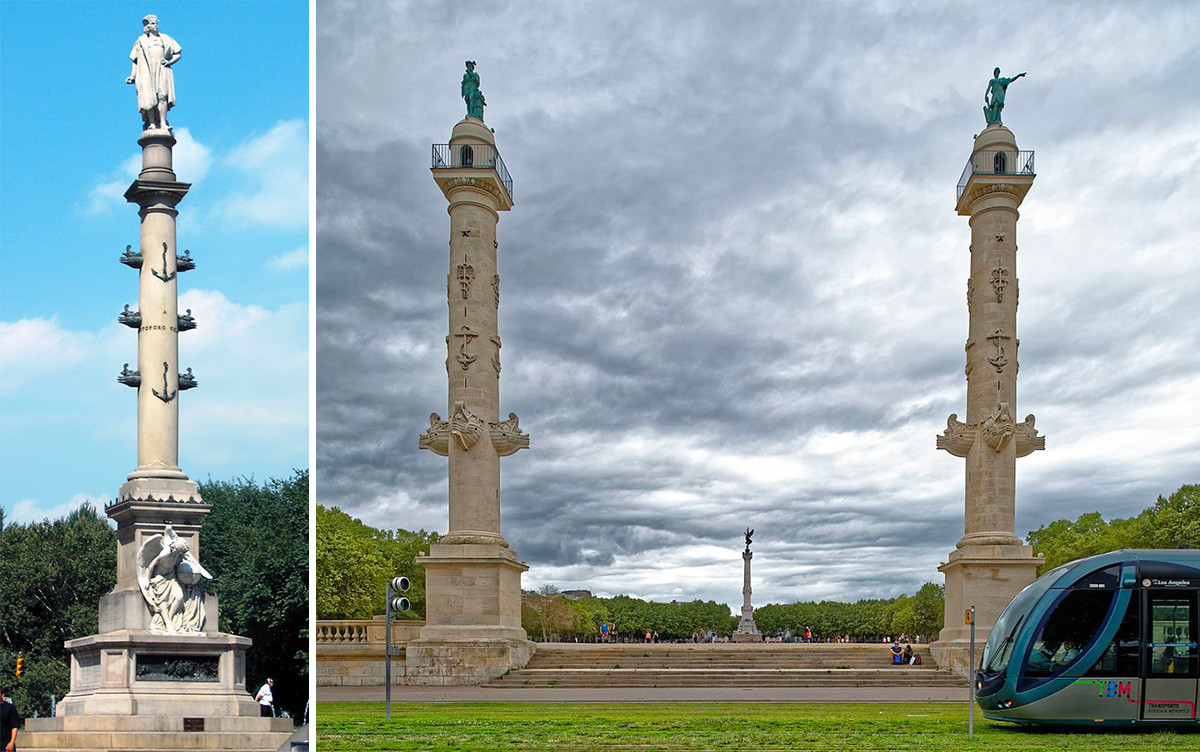
The Monument at Columbus Circle (L) and the rostral columns of the Place des Quinconces, Bordeaux, France
Marcel René Kalt; Albert Bergonzo (CC BY-SA 4.0)In Russia, there are also rostral columns in Tsarskoye Selo, not far from St. Petersburg, and they are dedicated to the Battle of Chesme in 1770, the greatest victory of the Russian navy.
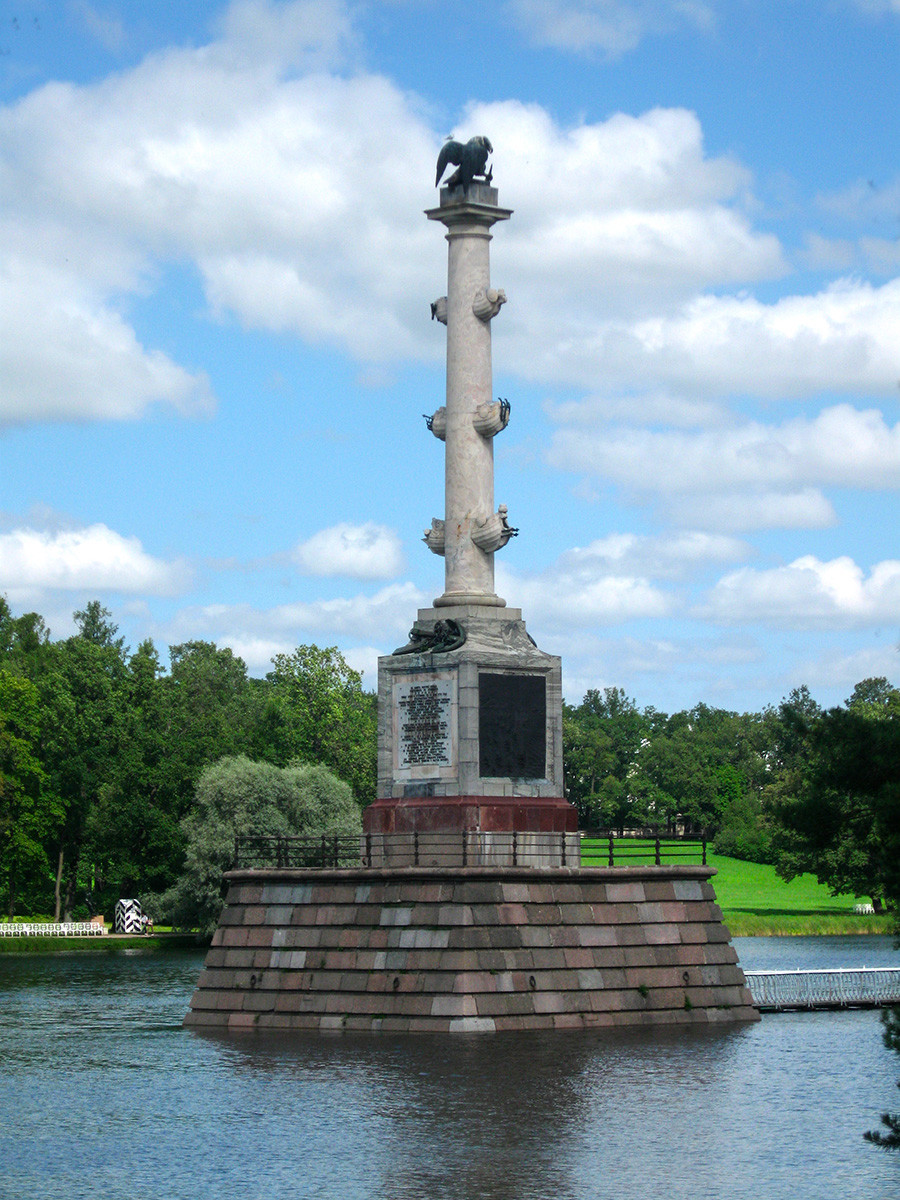
Chesme column in Tsarskoye Selo
Ljubimaja Muza (CC BY-SA 3.0)Another column decorates the entrance to Vladivostok city.
Petersburg rostral columns
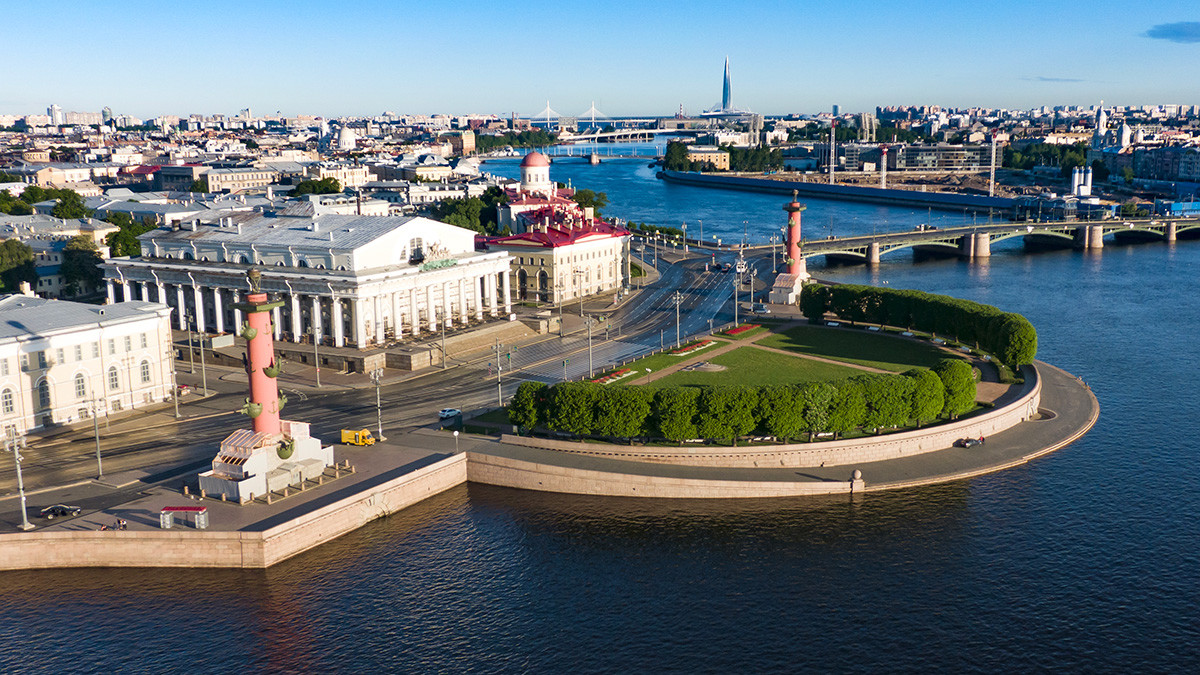
The Vasilievsky Island Spit
Elena Perova/Getty ImagesSt. Petersburg definitely has the most famous rostral columns in the world. They were created in 1805-1810 by French architect Jean-François Thomas de Thomon. He was actually in charge of the whole architectural ensemble of the Vasilievsky Island spite, which also includes the building of the St. Petersburg Stock Exchange. He committed his works in the neoclassical style, which Emperor Alexander I liked a lot.
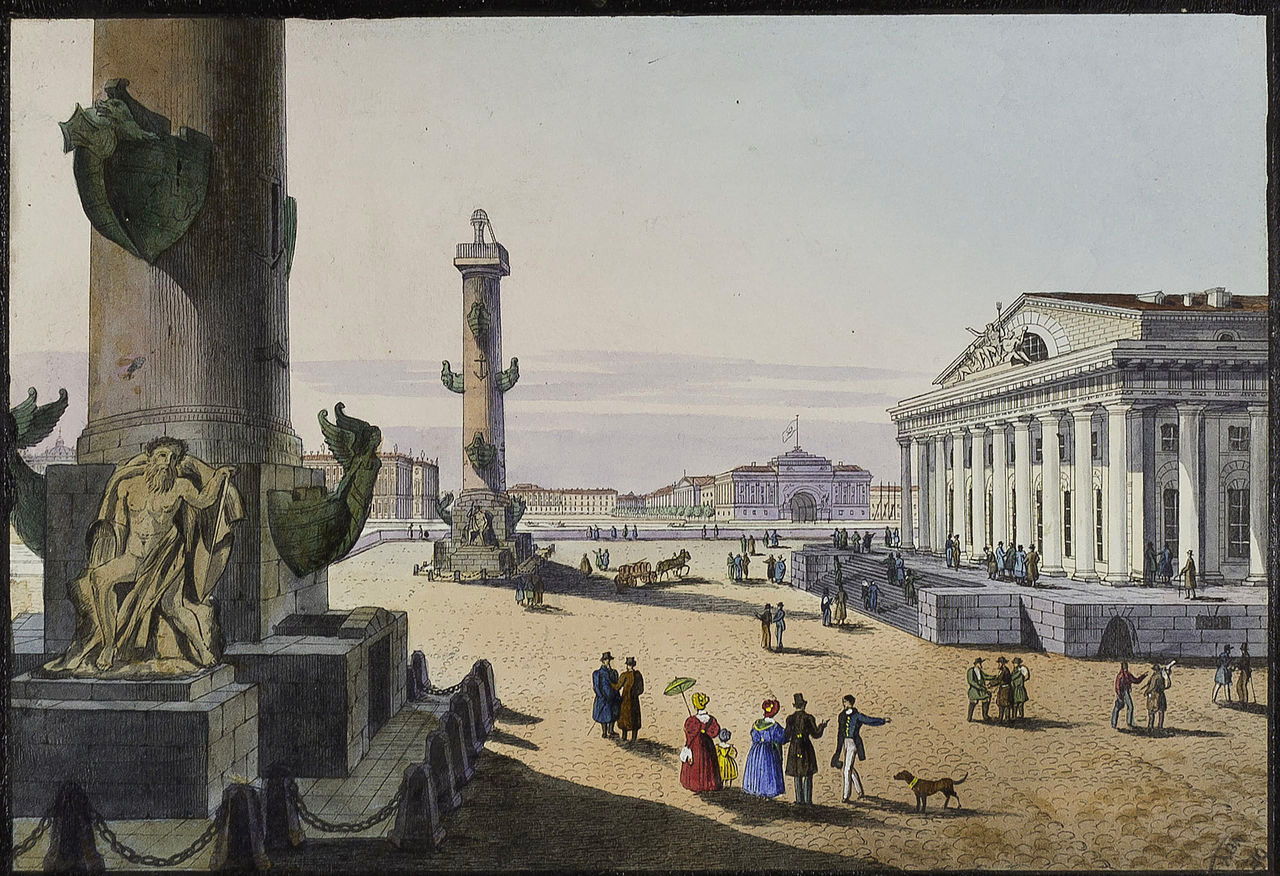
Karl Beggrov. St. Petersburg rostral columns in the 19th century
Bibliothèque municipale de NancyBoth columns are made from stone, they are 32 meters high and each of them is decorated with eight ship rams, as well as anchors, and fairy tale creatures: seahorses, fish, crocodiles. The ships’ “rastrums” on the St. Petersburg columns are, however, fake, being made from copper.

At the base of each column sit two figures, one male and one female. They resemble ancient gods and, according to the author’s vision, they symbolize gods of the sea and commerce (the stock exchange is nearby, remember?). However, later local historians assumed that these figures can symbolize the Russian rivers: Volga, Dnieper, Neva and Volkhov.
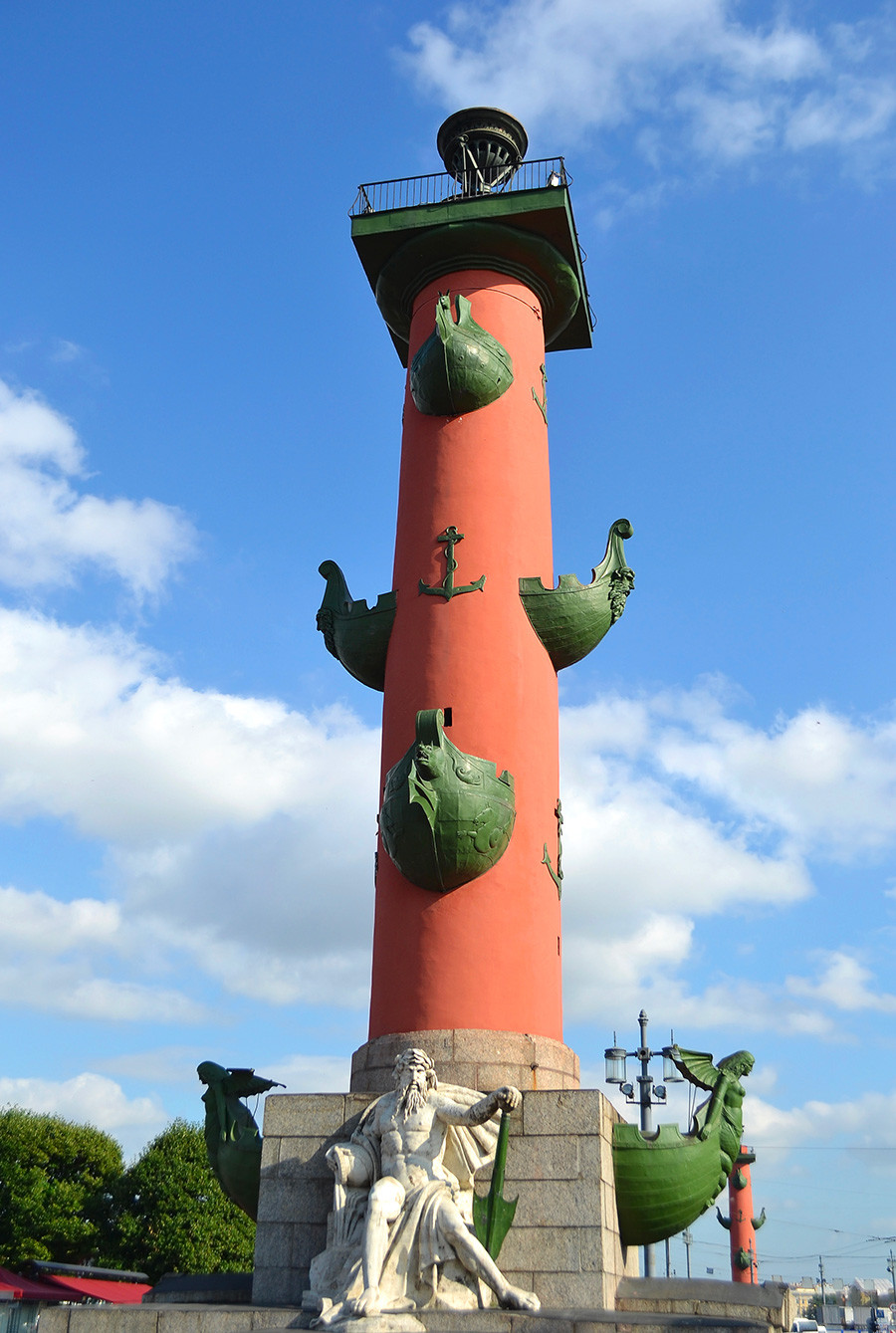
The columns are empty inside - there is a spiral staircase to the top of the columns, which lead to huge bowls with lamps. Actually, this is the main purpose of the columns… They were filled with oil and lit. Throughout the whole 19th century, those two huge torches served as a lighthouse for ships entering St. Petersburg’s port. And they were especially useful during nights and heavy fog.

However, it was rather expensive to maintain these lighthouses and, from the 20th century, they were used rarely and only for special occasions. Since 1957, the lights have been supplied with gas and are turned on on big events.
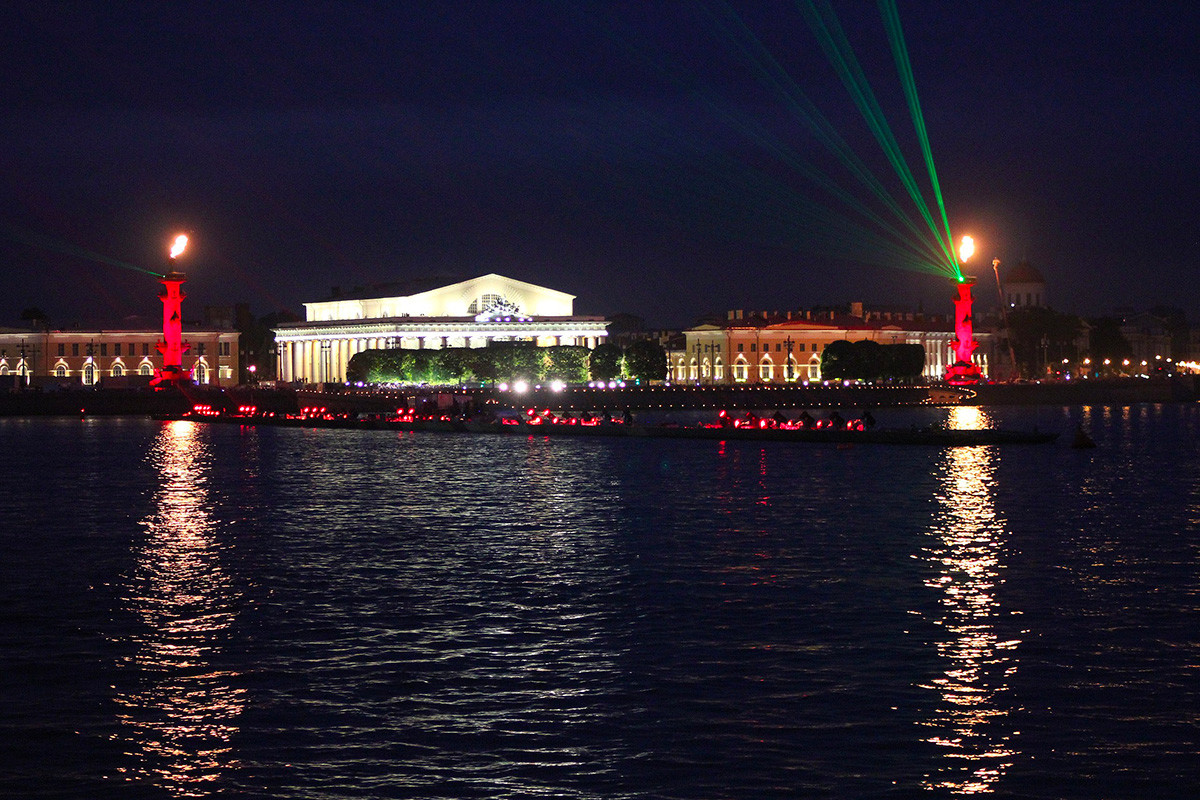
If using any of Russia Beyond's content, partly or in full, always provide an active hyperlink to the original material.
Subscribe
to our newsletter!
Get the week's best stories straight to your inbox